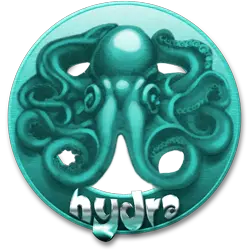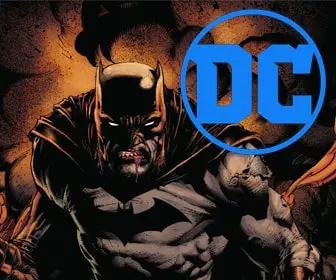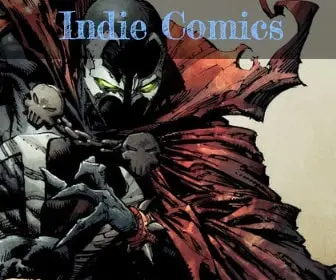
East Meets West: Manga’s Impact in the ’80s
In the 1980s, a new type of comic book started arriving in the United States from Japan. These comics, known as manga, brought fresh excitement and creativity to the American comic scene. Manga, already a major phenomenon in Japan, captivated young readers and artists in the U.S. with its unique stories and artistic styles. This wave of Japanese comics began influencing American creators and changed the way stories were told in Western comics. Let’s explore how this fascinating blend of cultures reshaped the comic book world during the vibrant decade of the 1980s.
The Entry of Manga into American Markets
In the early 1980s, Japanese manga started making its way into American comic book stores and libraries. This wasn’t just by chance. American publishers noticed how popular manga was in Japan and decided it was time to bring these exciting stories to the United States. They began translating manga into English, which allowed more people to enjoy these comics.
One of the biggest moments in this movement was the arrival of “Akira,” a groundbreaking manga by Katsuhiro Otomo. It was so important that a special partnership formed between the Japanese publisher Kodansha and an American company called Epic Comics, a part of Marvel Comics. Together, they started publishing an English version of “Akira.” This was one of the first times a full-length Japanese manga was available in English in America.
These efforts opened the door for more manga to enter the U.S. market. Soon, American readers got to enjoy a wide range of stories and characters that were different from the superheroes they were used to. This change brought new life and variety to the American comic scene, making it more colorful and diverse than ever before.
Case Study: “Akira” and its Impact
“Akira” is a manga series created by Katsuhiro Otomo that became famous worldwide. When it was first published in Japan in 1982, it quickly gained popularity for its exciting story and stunning artwork. “Akira” is about a futuristic Tokyo where a teenager named Tetsuo gains incredible psychic powers, which leads to epic adventures and battles.
In the United States, “Akira” made a huge splash in the comic book world. Epic Comics, a part of Marvel Comics, started publishing an English version in 1988. This was a big deal because it was one of the first times American readers got a full manga series in English. The translation was careful to keep the original right-to-left format, which was a new experience for many American readers.
The impact of “Akira” on American comics was powerful. It showed American artists and writers new ways to tell stories. The dynamic action scenes and complex characters in “Akira” inspired many American comic creators to try new ideas in their own work. The series also helped show that comics could tell mature and intricate stories, leading to a broader understanding of what comics could be.
Overall, “Akira” was not just a successful translation of a Japanese story; it was a gateway that introduced American readers and creators to a whole new world of storytelling possibilities. This helped pave the way for more manga to be appreciated and enjoyed in the Western world.
Artistic Influence
Manga introduced a whole new style to American comics. Japanese artists often use unique ways to show emotions and action in their drawings. These styles caught the eye of American comic book artists, who were excited to experiment with these new techniques.
One major difference in manga is how artists draw characters’ expressions. Manga faces can show a wide range of emotions with big eyes, exaggerated expressions, and dynamic poses. American artists started adopting these features, making their characters more expressive and lively.
Another artistic change was the layout of the pages. Manga often uses varied panel sizes and shapes, which can make a story feel fast-paced and full of energy. This approach was different from the more uniform panels typically seen in American comics. Inspired by manga, American creators began to play around with their panel designs to better capture the excitement of their stories.
Finally, manga’s influence can be seen in the detailed backgrounds and settings, which help create a deep and immersive world. American artists took note of this technique and started adding more details to their own work, making their comic worlds richer and more engaging.
Overall, manga has inspired American comic book artists to push the boundaries of their creativity. This blending of styles has led to comics that are not only more visually striking but also more engaging for readers.
Narrative Influence
Manga brought new storytelling techniques to American comics, changing how stories were told. One of the big changes was the focus on long, ongoing stories. Unlike many American comics that wrapped up quickly, manga often told complex tales that developed over many volumes. This inspired American writers to think bigger, creating longer and more involved story arcs in their series.
Character development is another area where manga had a big impact. In manga, characters often go through significant changes and growth, which adds depth to the story. This approach influenced American comics, encouraging writers to focus more on their characters’ journeys and emotions. As a result, characters in American comics became more relatable and real to the readers.
Manga also introduced themes that were new to many American readers, such as exploring philosophical questions or tackling social issues. These themes made the stories more thought-provoking and meaningful. American comics began to explore similar deep topics, broadening the kind of content that comics could handle.
The way manga blends different genres was also influential. In manga, it’s common to mix elements of fantasy, science fiction, romance, and drama all in one story. This flexibility showed American creators that they could break traditional genre boundaries, leading to innovative and exciting new comics.
Overall, the narrative techniques from manga have enriched American comics, making them more complex, engaging, and diverse. These changes have helped comics gain respect as a versatile form of storytelling.
Broader Cultural Impact
The influence of manga on American comics has reached far beyond just the pages of the books themselves. Manga has played a big role in changing how people in the U.S. view comic books and their place in culture.
Before manga became popular in the U.S., many people thought of comic books mainly as simple entertainment for children. However, manga often tackles complex stories and deep themes that appeal to older readers as well. This helped change the perception of comic books, showing that they can be serious literature worthy of respect.
Manga has also inspired other forms of media. Elements of manga can be seen in American movies, TV shows, and video games. For example, the dynamic action and storytelling styles of manga have influenced the way some American directors create films, making the action more intense and the narratives more intricate.
Additionally, the success of manga has led to more cultural exchange between the U.S. and Japan. Fans of manga often become interested in other aspects of Japanese culture, such as anime, music, and traditional arts. This has helped build stronger cultural ties and understanding between the two countries.
Overall, manga has had a significant impact on American culture, helping to broaden the appeal and appreciation of comics and fostering a greater appreciation of Japanese culture.
Conclusion
In summary, the influence of Japanese manga on American comics during the 1980s was profound and far-reaching. Manga introduced new artistic styles, storytelling techniques, and themes that reshaped the American comic book landscape. Through iconic works like “Akira,” manga showed that comics could be a platform for deep, engaging stories and complex character development.
As American artists and writers adopted these new ideas, the comic industry evolved, offering richer and more diverse narratives that appealed to a broader audience. This blending of Eastern and Western styles not only enhanced the creativity and depth of American comics but also helped change how comics are perceived in the wider culture.
Today, the legacy of manga’s influence is evident in the continued popularity and respect for graphic novels and comics. It’s clear that the cross-cultural exchange between Japan and America during the 1980s has had a lasting impact, enriching the world of comics and inspiring generations of creators and fans alike.












